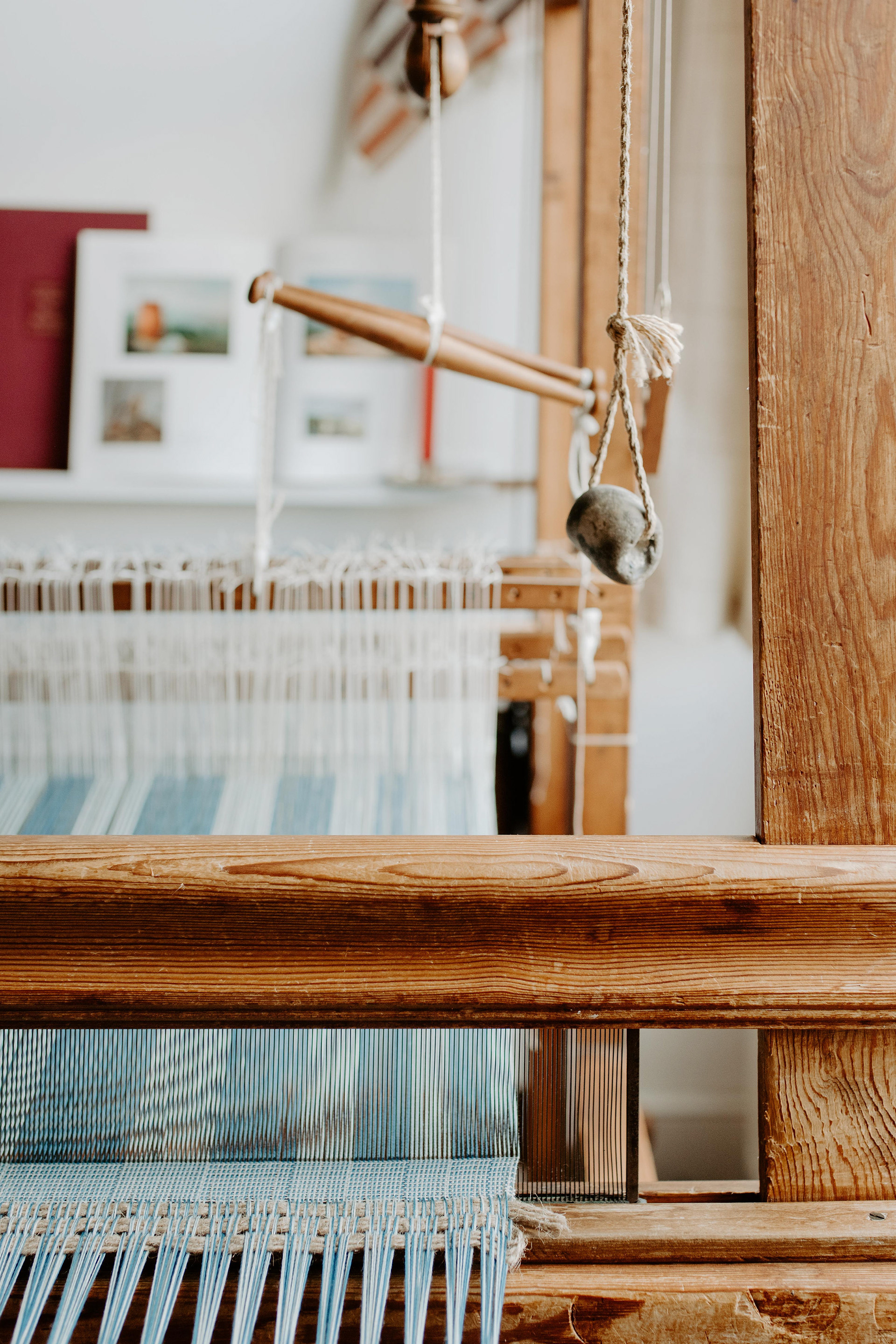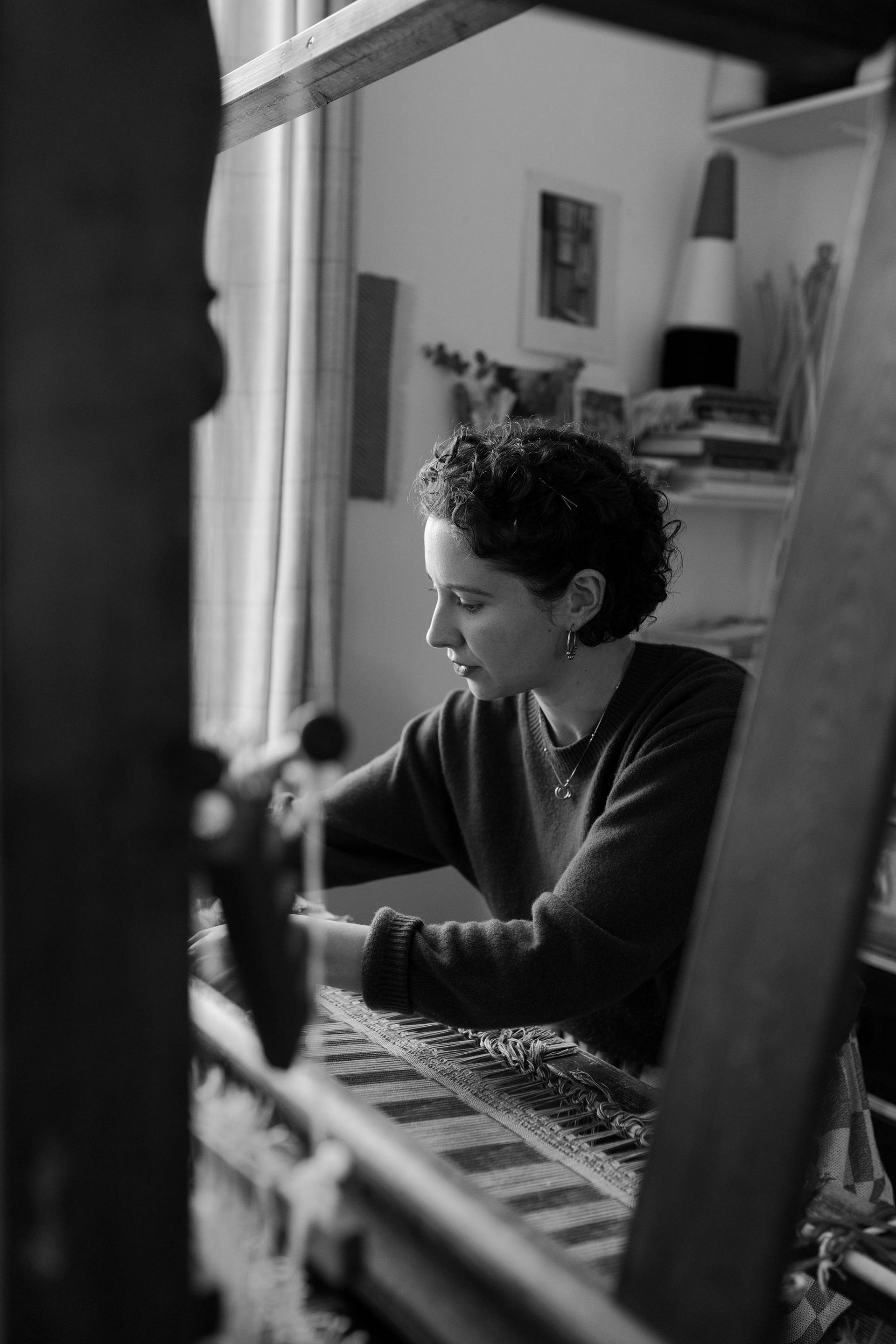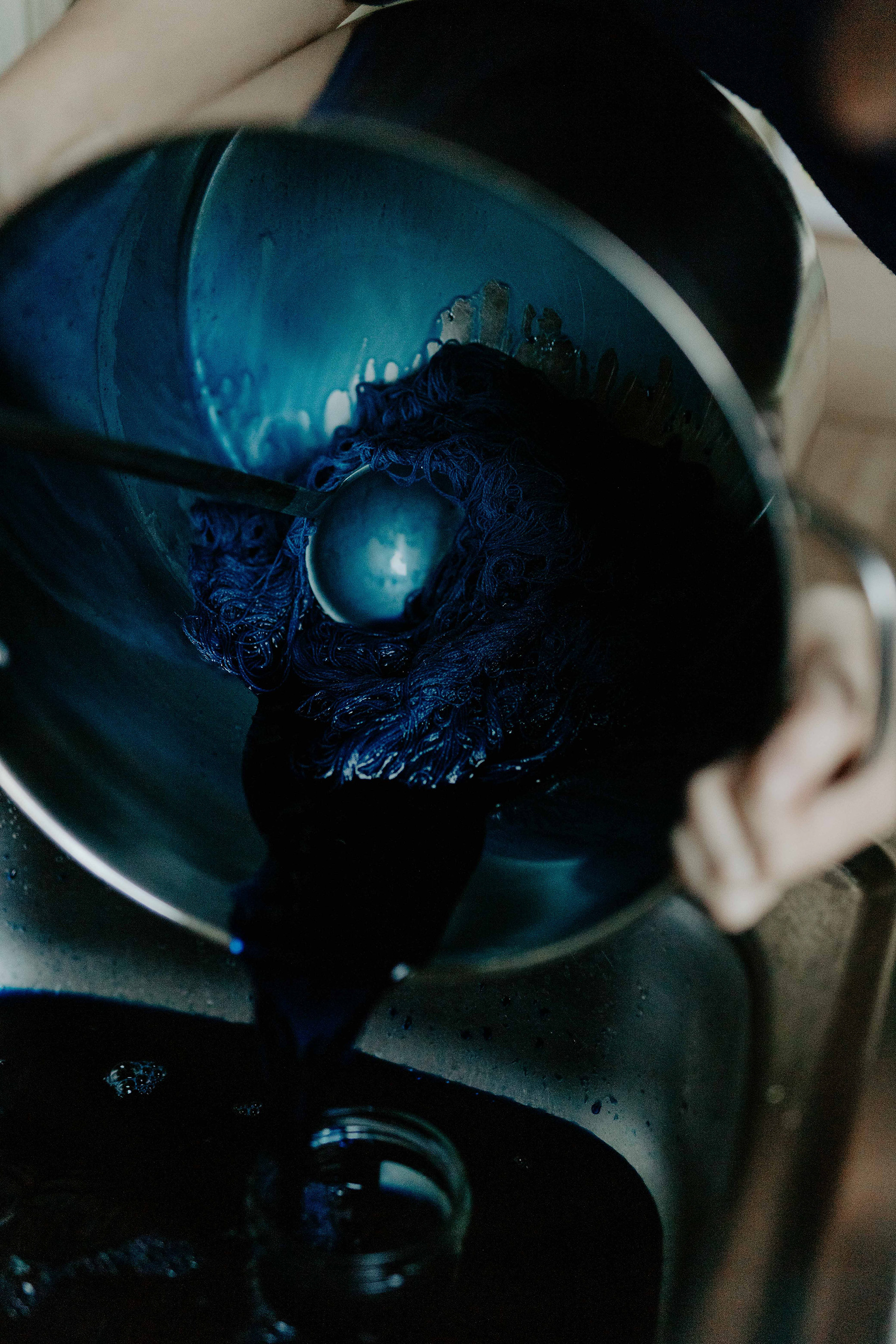Sabine Van der Sande is a handweaver based in London, UK. She weaves small batch textiles and researches ancient processes of textile production.
For enquiries, contact sabinevdsande@yahoo.co.uk
Weaving in the 21st century, or why I do what I do
As I sit at my 19th century loom, I often like to imagine its previous owners, and the owners of of looms like it, stretching back for generations. My body movements echo theirs, the sensation in my back as I bend over the web; the resistance at my feet as I push down the treadles in timeless order; the way my hand will fall on the same spot of the heavy beater as I draw it down to the fell of the cloth in a rhythm that ripples back through centuries.
I am handweaving in the context of modern mass production, when its laborious nature is no longer strictly 'necessary'. Because handweaving is, practically speaking, largely obsolete, people make assumptions about its purpose; that it must lend itself only to something especially boldly graphic or figurative. But for me, weaving has always been a way to reach back into the past, as a means of active listening, and the research is as much a part of my practice as the physical handweaving itself. I am driven by a passion for unearthing forgotten textile designs buried deep in the archives, the libraries, the old periodicals and manuals, I am the treasure hunter, the textile archaeologist!
And in following these old recipes, I have found that the textiles which captivate me most are those everyday staples: a gingham for a child’s dress, a crisp starched linen tablecloth brought out only on religious feast days and finished with red embroidery, sturdy cotton treated with oil to drive away the rain, a checked cloth dyed with indigo, or flowers cooked on the stove to yield a yellow dye. I am drawn to the care with which these things were made, and I feel pulled towards nurturing this care and bringing it back to life.
Six years into my journey as a weaver I became a mother, and as the time I have to dedicate to my practice becomes more and more piecemeal, so too do I begin to explore fragments of textiles, things stitched together, the role of domestic textiles and their function as protection, armour, comfort, nest building and duvet fort construction.




